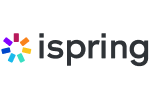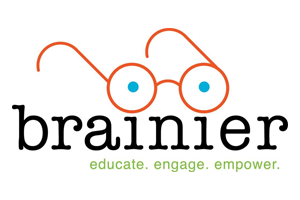In large organizations, it’s common to find that learning technologies have been chosen haphazardly. This may be caused by any number of factors, such as:
- Chasing the current learning technology everyone is talking about without an understanding of how the benefits of using it will be realized.
- Reluctance to choose any new learning technology for fear it won’t be able to be implemented.
- Lack of documentation/understanding about why a technology was chosen in the past.
- Absence of standards that would help guide wise choices.
- Absence of governance that would prevent different areas of an organization from forming separate contracts for the same type of learning technology functionality repeatedly (diluting bargaining power and increasing need for expertise and support on multiple similar systems).
A Learning Technologies Selection Process That Works
Here is a simple, prescribed process you can use to help overcome these issues:
1. Document the current state.
Conduct interviews and/or distribute surveys to gather data and create a document that lists which learning technologies are in use throughout the organization.
2. Identify needs.
Talk with stakeholders to determine which needs the learning technology could support that aren’t being fulfilled by existing tools. Look for places where there might be an option to simplify learning technology by reducing redundancy (i.e., multiple tools used for the same purpose).
For each need:
- Define requirements: Create a detailed requirements/specifications list that outlines all functional requirements necessary to fulfill the need. Work with stakeholders to determine which requirements are necessary and which are optional (i.e., “nice to haves”). The specifications list should include required features, user classes, operating environment, implementation constraints, documentation requirements, assumptions, dependencies, interface requirements, integration requirements and nonfunctional requirements (e.g., performance, backup system, security, testing, etc.)
- Evaluate solutions: Identify a shortlist of vendors who can provide the technology solution. This may be compiled through online research or with help from a learning technology consultant. Develop a request for proposal (RFP),which should include response requirements, statement of work (includes items from requirements document), pricing instructions, proposal evaluation criteria and project management requirements. Enlist the help of your procurement department as appropriate. Send the RFP to the vendors and evaluate the responses. Based on the responses, you can typically narrow down to a few finalists for functional presentations and follow-up questions based on the proposals.
- Set standards: This is a key step that’s sometimes overlooked. After selecting a solution that fulfills a particular need, it’s important to document the features and benefits of this solution in your organization’s learning strategy. This solution should become the standard tool for this type of need until a time comes when someone can justify (with a clear business case) why another tool should be selected. Furthermore, more detailed standards about how to use this tool will drive operational efficiency for using the tool throughout the organization.
An Example Framework for Learning Technologies
Documenting your current state is easier if you have a framework to help classify learning technologies. There isn’t one single right framework for this. The framework below (Figure 1 – Learning Technology Framework Example) is a framework I developed that shows the interrelationship between different technologies.
In this framework:
- Standardized systems allow learning to be obtained, distributed and tracked using interoperable tools.
- Standalone systems allow learning to be obtained, distributed and tracked within a single platform that does not need to interoperate with other tools.
- Artificial intelligence (AI) isn’t a learning technology in and of itself, but rather it’s a technology that can support or enhance the other technologies used for obtaining, distributing and tracking learning.

Following the process above, your goal is to develop a learning technology classification document for your organization that classifies all the learning technologies you’re currently using and the ones you’d like to start or stop using.
For each of the white boxes in Figure 1, list which tools are being used, which tools you’d like to add and which tools you’d like to stop using. You can also write some general comments about how effectively and efficiently this learning technology category is being used in your organization.
Depending on your organization’s size and how many learning technologies you’re currently using, you can expect this exercise to result in a report that’s somewhere in between 20 and 40 pages long. It should then be a working document that’s maintained as new learning technologies are added and obsolete ones are removed.








